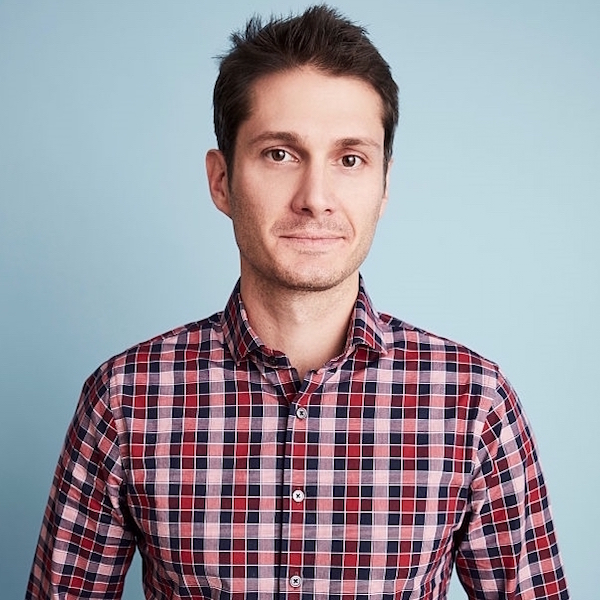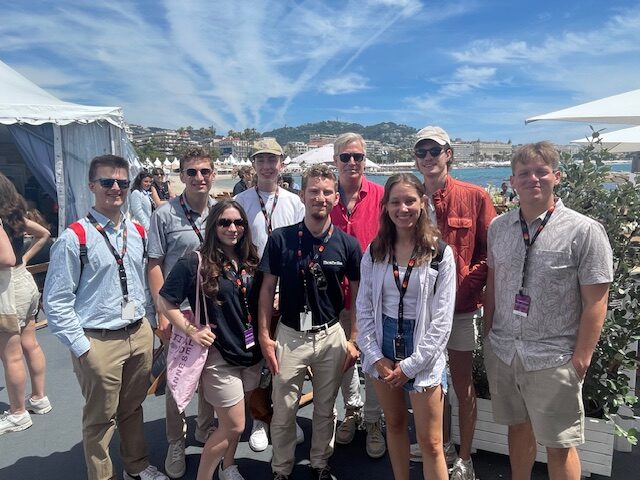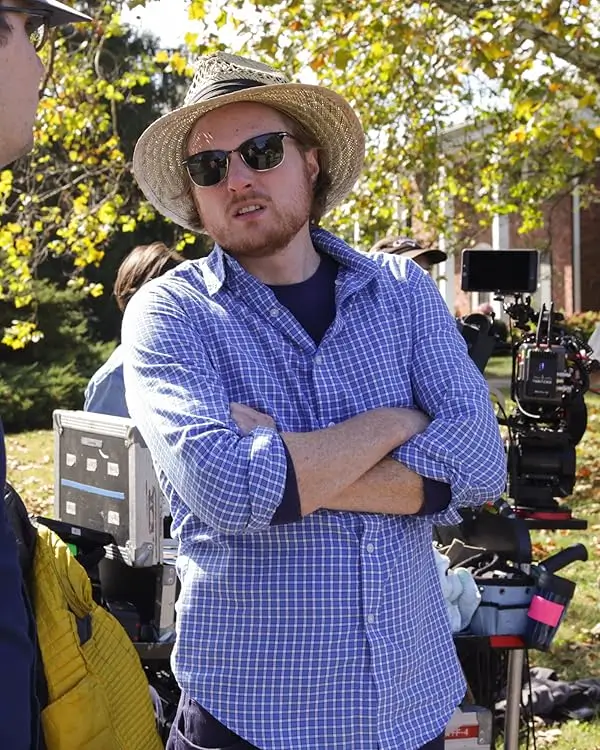The new indie romance BLUE JAY centers on a former high school couple, Jim (Mark Duplass) and Amanda (Sarah Paulson), who run into each other after 20 years while they’re both coincidentally visiting their hometown. The two grab coffee, which extends into a full day hanging out, catching up, and reflecting on old times. Duplass wrote the screenplay and produced the film along with his brother Jay as part of their four-picture deal with Netflix. For directing duties, the Duplass Brothers recruited cinematographer and documentarian ALEX LEHMANN.
Lehmann has worked in television and features as a camera operator and DP. His first directorial effort, the documentary Asperger’s Are Us, premiered at SXSW 2016 (and is also executive produced by the Duplass Brothers). Blue Jay, which premiered at the 2016 Toronto International Film Festival, is Lehmann’s first narrative film. It is currently playing in select theaters courtesy of distributor The Orchard, and arrives OnDemand today, October 11, and will stream on Netflix later this year.
Lehmann was kind enough to take the time to talk with us about his improv-heavy black-and-white narrative directorial debut, Blue Jay.
——
COLIN McCORMACK: How did you end up being brought into the Duplass Brothers Empire?
ALEX LEHMANN: [Laughs] The Duplassiverse. That’s a great question, and I always have to start by saying I feel incredibly fortunate to be there and I think there are a lot of really talented filmmakers that are totally as deserving. I just happened to have known Mark; I was a cameraman on The League. So we worked together for a bunch of years on The League and we got really comfortable with each other, making fart jokes and dick jokes over by the craft service table – away from everybody else – and then talking about these hopeful little indie films and documentaries that we’d both done. And I finally transitioned that into a documentary I had been making and didn’t know exactly how to get it out there or what to do with it. It was my first time making my own movie. And obviously Mark is the best resource when it comes to making your own stuff and getting it out there successfully. I had done this documentary called Asperger’s Are Us, and it was mostly done but I wanted his input as a filmmaker and a producer/distributor. And he really liked the doc and we teamed up on it and got it into festivals and released it. And then when he was making Blue Jay he wanted someone who had a cinematography background, somebody who could direct from behind the lens. He likes documentaries and documentarians a lot because they chase story, which is what you end up doing a lot with improv and certainly the way the Duplass Brothers make a lot of their films. So it was a perfect fit; I had met him and proven myself at the perfect time so it was just convergence where he passed the opportunity for me to direct and shoot Blue Jay.
CM: Because it was your first narrative film, did you do traditional camera blocking and setups, or was it more of a handheld camera, run-and-gun type of filmmaking?
AL: It was probably about 70/30… There are dialogue-heavy scenes that it just makes sense you want to be on the faces of these amazing actors, so those would be blocked and we kind of knew where we wanted them to be to keep talking. Those were a little bit more traditional setups. And then there were certain scenes – the other 30% – where we really wanted this natural docu-feel where it was just finding with the camera, hand-held– that’s the way I would operate, just chase and find little moments and I’d decide whose face to be on at what point and use my instincts to show what parts of the story to tell from a physical standpoint.
CM: Did you come in with a game plan of how you wanted to work with your actors since it was your first time?
AL: Yeah. Mark being a writer and a producer on this, as well as an actor, I knew that I wanted to go off of his gut as far as what the story was, and we definitely collaborated a lot as far as making sure that we felt like the performances were honest. We didn’t have a fleshed-out script where we knew exactly– it wasn’t like a cue-sheet where we could say, This is where there’s going to be that emotional turn, or anything. A lot of stuff was coming naturally. So it was more about letting it progress and seeing what [the actors] did in the moment and then Mark and I would discuss what worked, what didn’t work. So obviously I knew there was going to be that great collaboration. For a director with a cinematography background, it’s fantastic.
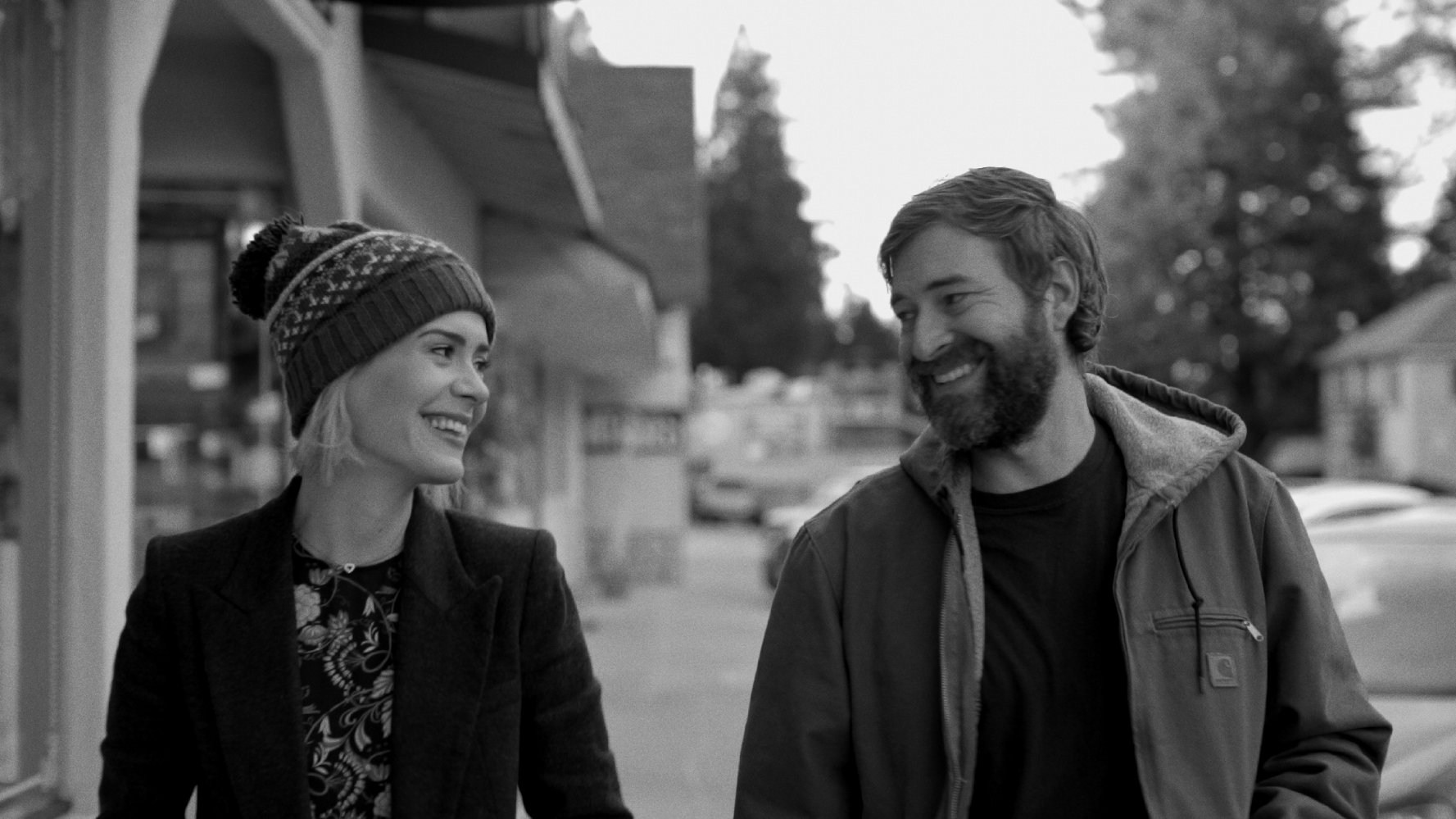
CM: Because there was so much improvisation, was it at all similar to how you work with your documentary subjects?
AL: Yeah, absolutely. There are things that come out whether you’re shooting a doc or an improv scene where things are said that have so much subtext and so much extra substance and you hear little things that resonate with the bigger themes of the film and you start chasing those moments and those feelings. In a documentary you’ll ask follow-up questions and kind of start honing in on those moments or those characters in situations where you think the rest of that story arc is going to reveal itself. Something like this where we’re shooting chronologically and with improv, basically I start knowing where the camera needs to be to start telling the rest of that story. Then obviously Mark and Sarah and I would discuss what resonated with us and what we wanted to chase and flesh-out as the arc continued and as we continued shooting the movie chronologically.
CM: So what did the screenplay look like when Mark brought you on board? Was there a screenplay at all or was it more of an idea or an outline?
AL: When Mark brought me on it was a two-page treatment, which I have to say is the most efficient two pages of writing I have ever seen. And it definitely told both the basic story and it has all the feelings and the nostalgic tone that the film is today. Then he, Sarah, myself, and our three creative producers Mel Eslyn, Xan Aranda, and Syd Fleischmann, we had a couple of prep sessions where we’d get together, talk about the story, and share our own personal stories and kind of throw out ideas and see what resonated. And then Mark would go back home [and] he’d extend that treatment to include the stuff we discussed. I think by the time we were shooting we had about fifteen pages. So it wasn’t a full script, the scenes weren’t fully written-out, but we had a lot more flesh as far as what the events were. And then the dialogue was almost all improv. There were a couple scenes where the night before Mark would just literally write them out as a real scripted scene if there was something really specific that we wanted to start off with, but we always knew we’d start going off-book and play around with the specific dialogue as we continued to explore the scene.
CM: And principal photography was seven days I heard?
AL: Yep.
CM: How much time was spent when you started the brainstorming? Was that part of the seven days or did the brainstorming and fleshing out the story start earlier?
AL: Yeah, the brainstorming and all that happened in prep. We did that over the course of a couple weeks leading up to shooting the film. The other thing I’ll say is we shot in seven days, but we all lived together in a couple houses and we all ate together, we ate lunch together and we ate dinner together. So when you have really smart producers who are so creative and even other crewmembers are so tuned-in to the story and are good filmmakers, they can’t help but bring up things that really resonated with them that we’d shot that day. So we really had these great family-style dinners where we’d talk about what happened and if somebody pointed out a magical moment that didn’t maybe resonate as much with us, that we didn’t notice while shooting, that was something we could go back and review and chase and do more of.
CM: You filmed in this really lush, woodsy area of California, so I can only imagine the colors available during that season. Why the decision to shoot in black-and-white?
AL: We wanted to strip the film down of a lot of unnecessary elements to really focus on the characters and the story. It makes you focus more on what’s happening and who the characters are. It’s how movies used to be made. You used to not have to cut as much, or have crazy sweeping shots, and you didn’t need to be as loud for a long time. And really good movies were made back then. We felt like we could make a movie like that and not succumb to the temptation of not creating more– I hate to use the word “distractions”– but in a film where the story is this simple, the filmmaking should be this simple. Color and other elements would have been a distraction from Mark and Sarah’s amazing performances and the very simple story that had a lot of subtext in the dialogue, and really important moments you needed to be cued into. And then the other thing is obviously the great timelessness and nostalgia with the black-and-white that thematically is right in place with what we were making.
CM: Was there a learning curve with filming in black-and-white? Did you have to either brush up on [technical skills] as your own DP or had you had experience filming in black-and-white before?
AL: I hadn’t filmed anything in black-and-white since film school, so I shot some tests and the most important thing for me was monitoring the black-and-white. So it wasn’t just shoot it in color and then put a filter on it later. Just being able to compose and light with the specific black-and-white look that we had designed for this film allowed us to shoot it properly.
CM: And is being your own DP something you think you’ll continue throughout the rest of your directing career?
AL: I don’t think so. I’ll probably do it sometimes and there will probably be times where I’ll want to operate a camera. I really like hand-held and I like longer takes, I love the theater format of really letting a scene play. So there’s definitely that desire of holding the camera for a lot of that. But I think there are so many talented DPs out there– I’ve got a lot of talented friends who are DPs and there are a lot of DPs who I don’t know personally that I’m a big fan of. I want to work with people who have different ideas and bring different looks and storytelling methods. So I think I’d be limiting myself a lot if I always DP’d my own stuff.
CM: And you were a camera operator on Project Greenlight?
AL: That was my first job in LA, yeah. That’s how I paid the bills and survived for a while, yeah.
CM: Any fun stories of lessons learned while being an aspiring filmmaker who’s filming aspiring filmmakers for reality TV?
AL: Well, I’ll tell you that the third actor in Blue Jay is Clu Gulager, who is an actor in the Project Greelight movie [Feast]. And his son was the director [John Gulager, winner of Project Greenlight Season 3].
CM: I actually interned for that season of Project Greenlight.
AL: No way! For Magical Elves, or LivePlanet?
CM: For LivePlanet. In the office.
AL: Oh that’s great. That’s fantastic. I just had a nice conversation with [producer] Chris Moore less than a week ago.
CM: Had you kept in touch with Clu Gulager? He’s pushing 90 and has been acting for decades. How did you end up casting him in Blue Jay?
AL: Well he definitely felt like the right character for Wayney. I know him and he’s a very romantic man and yeah, he just has such a beautiful heart and soul. I’ve kept in touch with him. I’ve definitely worked on a lot of projects with the Gulager family throughout the years. So I called Clu up and asked him if he would do this and he told me he would not, because he’s retired. And basically he made me beg and he made me work for it really hard and he finally agreed. I think he was willing to do it right away but he just wanted to make me work for it a little bit. He’s a big, big star in his own right, so I’m sure he just wanted me to really understand how much of a favor it was. Which is fine by me, I feel extremely lucky to have worked with him.
CM: And your documentary that the Duplasses executive produced is also coming out this month?
AL: I don’t think it’s coming out this month, but it will definitely be out by the end of the year on Netflix. And we’re just targeting the date soon. It’s called Asperger’s Are Us and it’s about the first openly all-Autistic comedy troupe. It’s a coming-of-age story about these four guys who act and do sketch comedy. It’s a really sweet story and they’re lovely guys.
CM: Have you learned about distribution through working with Netflix? Have you gotten a peek inside? I know they keep their cards close to the vest, but have you gotten any insight to their distribution model, or something you can apply to future films?
AL: Yeah I think I’ve learned a fair amount through Mark. He’s helped me deal with Netflix and the other distributors. Obviously it’s his company producing Blue Jay, so between that and Asperger’s Are Us, I’ve definitely tried to learn as much as I can. He’s on the forefront of a lot of that stuff. Mark Duplass has a lot to teach, and I’m trying to learn as much as I can.
CM: Do you have another project lined up, either for the Duplass Brothers or on your own?
AL: Yeah, Mark and I have a couple irons in the fire. Nothing I can talk about yet. And I’m right back at it where everyone else is. I’m writing and reading scripts, just trying to get the next one made. There’s so many talented people out there doing it that I don’t take it for granted when I get the opportunity to make something.
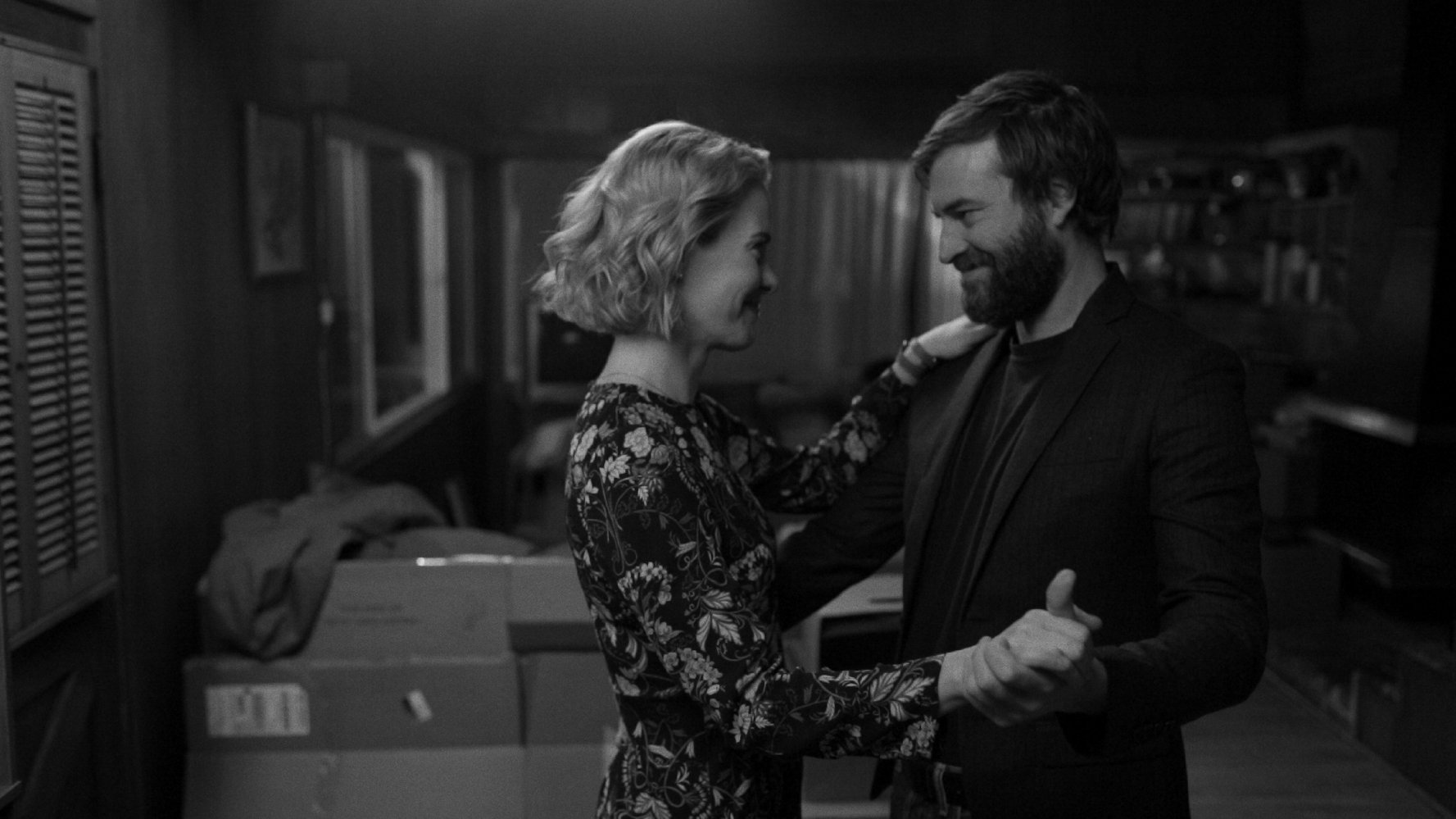
__
Thanks to Alex for talking with us about BLUE JAY.
If you’re an independent filmmaker or know of an independent film-related topic we should write about, email blogadmin@sagindie.org for consideration.

